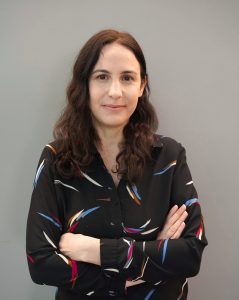The Brain Networks and Cognition (BNC) Lab
The BNC lab is directed by Dr. Yael Jacob, PhD. an Assistant Professor for Psychiatry and Neuroscience. Our research is aimed at understanding how different networks communicate and influence each other and how their interactions underlie pathological brain states. Focusing on developing both network-theory-based MRI analysis methods as well as utilizing the ultra-high field 7-Tesla MRI for real-time neurofeedback procedures and to improve spatial resolution for better modeling of the whole-brain functional and structural networks. We develop and apply new methods to explore the underlying complex brain mechanisms of pathologies such as major depressive disorder (MDD) and general anxiety disorder (GAD) through the lens of systems network approach. Furthermore, we test the brain network correlates of behavioral and pathological differences transdiagnostically across different diverse psychiatric disorders. We then use these network properties to predict individual brain states employing advanced machine-learning and deep-learning algorithms to discern novel biomarkers to facilitate the development of novel prevention strategies, diagnostic tools, and interventions.
Current Projects
Multidimensional brain connectome features of depression and anxiety.
This study examines small sub-regions of limbic structures such as the hippocampus sub-fields and amygdala sub-nuclei, using combined structural and functional ultra-high field 7-Tesla MRI and connectomic analysis to determine how they relate to core symptoms of mood and anxiety disorders.
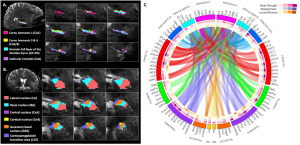

Network-based real-time neurofeedback using ultra-high field MRI to reduce rumination levels in depression.
This study implements the first real-time functional MRI neurofeedback (Rt-fMRI-NF) network-based protocol for up-regulation of the medial orbitofrontal cortex (MOFC) influence on the precuneus brain region in patients with major depressive disorder (MDD) to reduce rumination levels. This will allow for more accurate explicit brain connections modulation than the standard single brain region activity; creating a larger opportunity for target clinical neuromodulation treatment in individuals with depression.
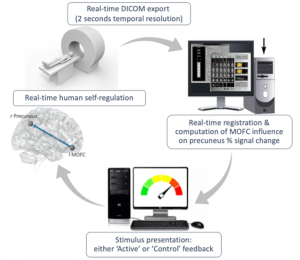
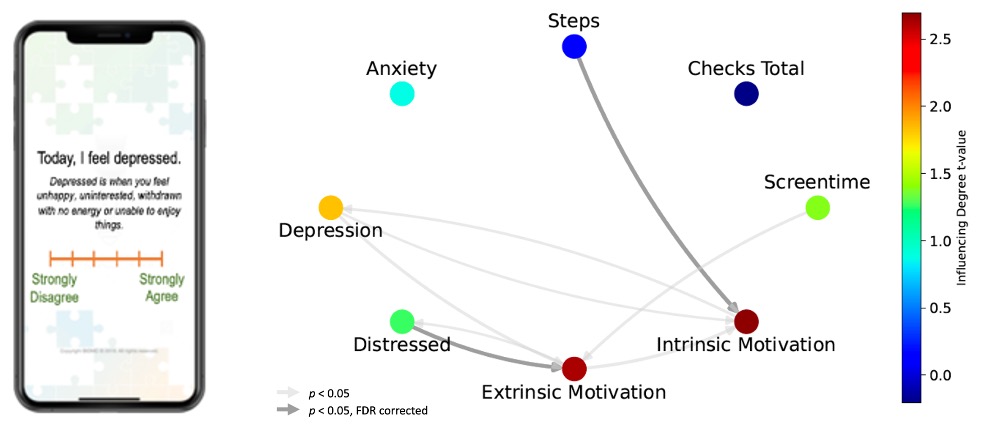
Network analysis in the real-world data
We explore network dynamics using real-world passive data, such as the number of steps and screen time and checks, and active data such as the mood and valance daily ratings. We apply different computational analyses to explore network dynamics in relation to psychiatric symptoms for digital phenotyping to identify predictive patterns.
Psychedelics effect on neural networks
In several Ketamine and Psylocibin clinical studies at the depression and anxiety center, we apply network analysis to explore brain network modularity and flexibility differences from baseline, active and end of treatment. In these studies we aim to enhance our understanding of the mechanism by which psychedelics improve depressive symptoms and to identify neuroimaging biomarkers and clinical markers predictive of response to psychedelics.
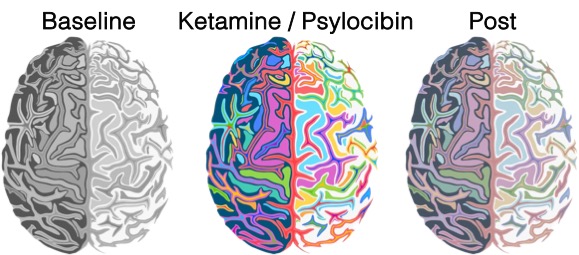
Participate in our ongoing studies – learn more and sign up here
Funding & Awards
- NIH/NIMH K01MH131855 (PI: Jacob), Multidimensional brain connectome features of depression and anxiety.
- Richard and Susan Friedman Research Scholar Award (PI: Jacob), Characterizing the Brain Microstructure Underlying the Antidepressant Effects of Ketamine and Transcranial Magnetic Stimulation Interventions.
- ANRP Pilot Research Grant (PI: Jacob), Network-based real-time neurofeedback using ultra-high field MRI for treatment of depression.
- Friedman Brain Institute Innovator Award (PI: Jacob), Network-based real-time neurofeedback using ultra-high field MRI to reduce rumination levels in depression.
- NIH/NIMH R01MH116953 (Co-I: Jacob, PI: Murrough & Balchandani), Transdiagnostic Multimodal 7 Tesla MRI of the Locus Coeruleus in Human Pathological Anxiety.
- NIH/NIA R21AG076211 (Co-I: Jacob, PI: Balchandani), Use of 7T multimodal imaging to detect brain changes associated with light therapy in persons with mild cognitive impairment and mild Alzheimer’s Disease.
- NIH/NIDCR R56DE030680 (Co-I: Jacob, PI: Balchandani), Visualizing trigeminal neuralgia at 7 Tesla: Advancing etiological understanding to improve future clinical care.
- Gottesman Fund (Co-I: Jacob, PI: Murrough & Fremont), A Randomized-Controlled Trial of Ketamine-Assisted Psychotherapy (KAP) Compared to Ketamine Alone for the Treatment of Depression.
- Ehrenkranz Fund (Co-I: Jacob, PI: Murrough), Psilocybin: Investigating the role of serotonin in the mechanism of action of psilocybin in patients with major depressive disorder.
- NIH/NIMH R01MH133625 (Co-I: Jacob, PI: Fiore), Neurocomputational mechanisms and connectivity dynamics underlying obsessive-compulsive disorder and phenotypical differentiations.
- NIH R01AG079586 (Co-I: Jacob, PI: Balchandani), Gut-brain axis in Alzheimer’s disease: translational 7T MRI markers and underlying mechanisms.
- NIH/NIMH R01MH134045 (Co-I: Jacob, PI: Murrough), Neural Circuit-Specific Mechanisms of Ketamine’s Effect on Anhedonia and Anxiety in Depression Using Ultra-High Field 7-Tesla MRI.
- NIH/NIMH R01MH139940 (Co-I: Jacob, PI: Bachi), Pathophysiological mechanisms of cannabidiol in stress regulation.
Publications
PubMed- Chowdhury, A., Boukezzi, S., Costi, S., Hameed, S., Jacob, Y., Salas, R., Iosifescu, D.V., Han, M.-H., Swann, A., Mathew, S.J., Morris, L., Murrough, J.W. (2025). Effects of the KCNQ (Kv7) Channel Opener Ezogabine on Resting-State Functional Connectivity of Striatal Brain Reward Regions, Depression, and Anhedonia in Major Depressive Disorder: Results From a Randomized Controlled Trial. Biol Psychiatry.
- Boukezzi, S.C., Neukam, P.T., Nicholas, B., Jacob, Y., Smith, D.A., Whitaker, Y., Rutter, S.B., Soogrim, V., Feder, A., Charney, D.S., Grillon, C., Kundu, P., Balchandani, P., Morris, L.S., Murrough, J.W. (2025). Role of the locus coeruleus in response to threat in anxiety disorders and posttraumatic stress disorder (PTSD): An ultra-high field 7-Tesla functional MRI study. Biological Psychiatry Global Open Science, 100596.
- Beltrán, J.M., Jacob, Y., Mehta, M.M., Hossain, T., Adams, A., Fontaine, S., Torous, J., McDonough, C., Johnson, M., Delgado, A.D., Murrough, J.W., Morris, L.S. (2025). Digital measures of activity and motivation impact depression and anxiety in the real world. npj Digital Medicine 8, 268.
- Mehta, M. M., Butler, G., Ahn, C., Whitaker, Y. I., Bachi, K., Jacob, Y., Treadway, M., Murrough, J. W., Morris, L. S. (2024). Intrinsic and extrinsic control impact motivation and outcome sensitivity: the role of anhedonia, stress, and anxiety. Psychological Medicine, 1-10.
- Alper, J., Feng, R., Verma, G., Rutter, S., Huang, K.-h., Xie, L., Yushkevich, P., Jacob, Y., Brown, S., Kautz, M., Schneider, M., Lin, H.-M., Fleysher, L., Delman, B.N., Hof, P.R., Murrough, J.W., Balchandani, P (2023). “Stress-related reduction of hippocampal subfield volumes in major depressive disorder: A 7-Tesla study. ” Frontiers in Psychiatry 14.
- Saar-Ashkenazy, R., Guez, J., Jacob, Y., Veksler, R., Cohen, J.E., Shelef, I., Friedman, A., Benifla, M (2023). “White-matter correlates of anxiety: The contribution of the corpus-callosum to the study of anxiety and stress-related disorders. ” International Journal of Methods in Psychiatric Research, 32(4), e1955.
- Jacob, Y., L. S. Morris, G. Verma, S. Rutter, P. Balchandani and J. W. Murrough (2022). “Altered hippocampus and amygdala subregion connectome hierarchy in major depressive disorder.” Transl Psychiatry 12: 209.
- Morris, L. S., M. Mehta, C. Ahn, M. Corniquel, G. Verma, B. Delman, P. R. Hof, Jacob, P. Balchandani and J. W. Murrough (2022). “Ventral tegmental area integrity measured with high-resolution 7-Tesla MRI relates to motivation across depression and anxiety diagnoses.” NeuroImage 264: 119704.
- Verma, G., Jacob, M. Jha, L.S. Morris, B.N. Delman, L. Marcuse, M. Fields and P. Balchandani (2022). ”Quantification of brain age using high-resolution 7 tesla MR Imaging and implications for epilepsy. “Epilepsy & Behavior Reports, 100530, 2589-9864.
- Alper, J., A.C. Seifert, G. Verma, K.H. Huang, Jacob, A. Al Qadi, J.W. Rutland, S. Patel, J. Bederson, R.K. Shrivastava, B.N. Delman and P. Balchandani (2021). “Leveraging high-resolution 7-tesla MRI to derive quantitative metrics for the trigeminal nerve and subnuclei of limbic structures in trigeminal neuralgia.” The journal of headache and pain, 22(1): 1-9.
- Nir, T., R. Raizman, I. Meningher, Jacob, K.H. Huang, A.E. Schwartz, J.W. Brallier, H. Ahn, P. Kundu, C.Y. Tang, B.N. Delman, … and Mincer, J. S. (2021). “Lateralisation of subcortical functional connectivity during and after general anaesthesia.” British journal of anaesthesia, 128(1):65-76.
- Nir, T., Jacob, K.H. Huang, A. E. Schwartz, J. W. Brallier, H. Ahn, P. Kundu, C. Y. Tang, B. N. Delman, P. J. McCormick, M. Sano, S. Deiner, M. G. Baxter and J. S. Mincer (2020). “Resting-state functional connectivity in early postanaesthesia recovery is characterised by globally reduced anticorrelations.” British Journal of Anaesthesia 125(4): 529-538.
- Jacob, Y., L. S. Morris, K.-H. Huang, M. Schneider, S. Rutter, G. Verma, J. W. Murrough and P. Balchandani (2020). “Neural correlates of rumination in major depressive disorder: A brain network ” NeuroImage: Clinical 25: 102142.
- Nir, T., Jacob, K.-H. Huang, A. E. Schwartz, J. W. Brallier, H. Ahn, P. Kundu, C. Y. Tang, B. N. Delman, P. J. McCormick, M. Sano, S. Deiner, M. G. Baxter and J. S. Mincer (2020). “Resting-state functional connectivity in early postanaesthesia recovery is characterised by globally reduced anticorrelations.” British Journal of Anaesthesia 125(4): 529-538.
- Droby, A., I. Maidan, Jacob, N. Giladi, J. M. Hausdorff and A. Mirelman (2020). “Distinct Effects of Motor Training on Resting-State Functional Networks of the Brain in Parkinson’s disease.” Neurorehabilitation and Neural Repair 1545968320940985.
- Maidan, I., A. Droby, Jacob, N. Giladi, J. M. Hausdorff and A. Mirelman (2020). “The neural correlates of falls: Alterations in large-scale resting-state networks in elderly fallers.” Gait & Posture 80: 56-61.
- Jacob, Y., K. Rosenberg-Katz, T. Gurevich, R. C. Helmich, B. R. Bloem, A. Orr-Urtreger, N. Giladi, A. Mirelman, T. Hendler and A. Thaler (2019). “Network abnormalities among non-manifesting Parkinson disease related LRRK2 mutation carriers.” Human Brain Mapping 40(8): 2546-2555.
- Maidan, I., Jacob, N. Giladi, J. M. Hausdorff and A. Mirelman (2019). “Altered organization of the dorsal attention network is associated with freezing of gait in Parkinson’s disease.” Parkinsonism & Related Disorders 63: 77-82.
- Jacob, Y., O. Shany, P. R. Goldin, J. J. Gross and T. Hendler (2018). “Reappraisal of Interpersonal Criticism in Social Anxiety Disorder: A Brain Network Hierarchy Perspective.” Cerebral Cortex: bhy181-
- Jacob, Y., G. Gilam, T. Lin, G. Raz and T. Hendler (2018). “Anger Modulates Influence Hierarchies Within and Between Emotional Reactivity and Regulation Networks.” Frontiers in Behavioral Neuroscience 12 (60).
- Hendler, T., G. Raz, S. Shimrit, Jacob, T. Lin, L. Roseman, W. M. Wahid, I. Kremer, M. Kupchik and M. Kotler (2018). “Social affective context reveals altered network dynamics in schizophrenia patients.” Translational psychiatry 8(1): 1-12.
- Abraham, E., G. Gilam, Y. Kanat-Maymon, Jacob, O. Zagoory-Sharon, T. Hendler and R. Feldman (2017). “The human coparental bond implicates distinct corticostriatal pathways: longitudinal impact on family formation and child well-being.” Neuropsychopharmacology 42(12): 2301-2313.
- Maidan, I., K. Rosenberg-Katz, Jacob, N. Giladi, J. M. Hausdorff and A. Mirelman (2017). “Disparate effects of training on brain activation in Parkinson disease.” Neurology 89(17): 1804-1810.
- Jacob, Y., Y. Winetraub, G. Raz, E. Ben-Simon, H. Okon-Singer, K. Rosenberg-Katz, T. Hendler and E. Ben-Jacob (2016). “Dependency Network Analysis (DEPNA) Reveals Context Related Influence of Brain Network Nodes.” Scientific Reports 6: 27444.
- Maidan, I., K. Rosenberg-Katz, Jacob, N. Giladi, J. Deutsch, J. Hausdorff and A. Mirelman (2016). ”Altered brain activation in complex walking conditions in patients with Parkinson’s disease.” Parkinsonism & related disorders 25: 91-96.
- Rosenberg-Katz, K., T. Herman, Jacob, E. Kliper, N. Giladi and J. M. Hausdorff (2016). “Subcortical volumes differ in Parkinson’s disease motor subtypes: new insights into the pathophysiology of disparate symptoms.” Frontiers in human neuroscience 10: 356.
- Rosenberg-Katz, K., I. Maidan, Jacob, N. Giladi, A. Mirelman and J. M. Hausdorff (2016). ”Alterations in conflict monitoring are related to functional connectivity in Parkinson’s disease.” cortex 82: 277-286.
- Raz, G., L. Shpigelman, Jacob, T. Gonen, Y. Benjamini and T. Hendler (2016). “Psychophysiological whole‐brain network clustering based on connectivity dynamics analysis in naturalistic conditions.” Human Brain Mapping 37(12): 4654-4672.
- Raz, G., A. Touroutoglou, C. Wilson-Mendenhall, G. Gilam, T. Lin, T. Gonen, Jacob, S. Atzil, R. Admon and M. Bleich-Cohen (2016). “Functional connectivity dynamics during film viewing reveal common networks for different emotional experiences.” Cognitive, Affective, & Behavioral Neuroscience 16 (4): 709-723.
- Rosenberg-Katz, K., T. Herman, Jacob, A. Mirelman, N. Giladi, T. Hendler and J. M. Hausdorff (2015). ”fall risk is associated with amplified functional connectivity of the central executive network in patients with Parkinson’s disease.” Journal of neurology 262(11): 2448-2456.
- Raz, G., Jacob, T. Gonen, Y. Winetraub, T. Flash, E. Soreq and T. Hendler (2014). “Cry for her or cry with her: context-dependent dissociation of two modes of cinematic empathy reflected in network cohesion dynamics.” Social cognitive and affective neuroscience 9(1): 30-38.
- Herman, T., K. Rosenberg‐Katz, Jacob, N. Giladi and J. M. Hausdorff (2014). “Gray matter atrophy and freezing of gait in Parkinson’s disease: Is the evidence black‐on‐white?” Movement Disorders 29 (1): 134-139.
- Thaler, A., M. Artzi, A. Mirelman, Jacob, R. C. Helmich, B. F. van Nuenen, T. Gurevich, A. Orr‐Urtreger, K. Marder and S. Bressman (2014). “A voxel‐based morphometry and diffusion tensor imaging analysis of asymptomatic Parkinson’s disease‐related G2019S LRRK2 mutation carriers.” Movement Disorders 29(6): 823-827.
- Shapira-Lichter, I., N. Oren, Jacob, M. Gruberger and T. Hendler (2013). “Portraying the unique contribution of the default mode network to internally driven mnemonic processes.” Proceedings of the National Academy of Sciences 110(13): 4950-4955.
- Rosenberg-Katz, K., T. Herman, Jacob, N. Giladi, T. Hendler and J. M. Hausdorff (2013). “Gray matter atrophy distinguishes between Parkinson disease motor subtypes.” Neurology 80(16): 1476-1484.
- Herman, T., K. Rosenberg-Katz, Jacob, E. Auriel, T. Gurevich, N. Giladi and J. M. Hausdorff (2013). ”White matter hyperintensities in Parkinson’s disease: do they explain the disparity between the postural instability gait difficulty and tremor dominant subtypes?” PLoS One 8(1): e55193.
- Raz, G., Y. Winetraub, Jacob, S. Kinreich, A. Maron-Katz, G. Shaham, I. Podlipsky, G. Gilam, E. Soreq and T. Hendler (2012). “Portraying emotions at their unfolding: a multilayered approach for probing dynamics of neural networks.” Neuroimage 60(2): 1448-1461.
- Jacob, Y., A. Rapson, M. Kafri, I. Baruchi, T. Hendler and E. Ben Jacob (2010). “Revealing voxel correlation cliques by functional holography analysis of fMRI.” Journal of Neuroscience Methods 191 (1): 126-137.
Book Chapter
- Jacob, Y., D. Papo, E. Ben-Jacob, T. Hendler (2012). Functional Holography and Cliques in Brain Activation Patterns: INTECH Open Access Publisher.
Lab Members
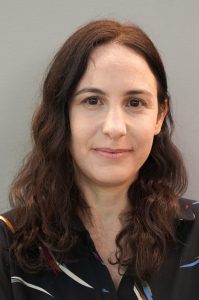
Yael Jacob, PhD
Principal Investigator
Yael is the Director of the BNC Lab. She completed her B.Sc. in Physics, M.Sc. in Medical Science, and a Ph.D. in Neuroscience at the University of Tel Aviv, Israel. She then conducted a postdoctoral fellowship at the BioMedical Engineering and Imaging Institute (BMEII) at Icahn School of Medicine at Mount Sinai (ISMMS) and is now an Assistant Professor in the Department of Psychiatry at ISMMS. She has expertise in the development and utilization of new computational methods and algorithms using advanced brain imaging techniques for the study of complex brain network mechanisms that underlie behavioral and pathological differences in psychiatric disorders.

B. Ülgen Kilic, PhD
Postdoctoral Fellow
Ülgen Kilic earned his B.S. in Mathematics from Boğaziçi University in Istanbul and completed his Ph.D. in Applied Mathematics at the University at Buffalo, SUNY, NY. He is currently a Postdoctoral Fellow at the Depression and Anxiety Center and the Center for Computational Psychiatry within the Department of Psychiatry. Using advanced methods from network science, dynamical systems, topological data analysis (TDA), and AI/ML, Ülgen’s research focuses on developing data-driven analysis frameworks tailored to neuroimaging data, with the goal of exploring neural dynamics across various cognitive processes, behavioral states, and psychiatric illnesses.

Stuti Bansal
Graduate Student
Stuti Bansal received her B.A. in Neurobiology from the University of California, Berkeley, and subsequently completed a post-baccalaureate fellowship at the NIMH. Currently she is an MD-PhD student at the Icahn School of Medicine at Mt. Sinai training to become a physician-scientist in the fields of psychiatry and neuroimaging. Her main research interests are the neuroanatomical correlates of psychiatric disorders. Her PhD work is focused on diffusion imaging markers of depression.

Jenna Jubeir
Graduate Student
Jenna Jubeir received her BS in Computer Science from Northwestern University. Before beginning graduate school, she worked as a research data analyst and lab manager at the Personalized and Translational Neuroscience Laboratory at Stanford University. Jenna is currently a PhD student in Neuroscience at the Icahn School of Medicine at Mount Sinai. Her research focuses on integrating computational modeling with ultra-high-field neuroimaging to uncover circuit-level mechanisms underlying depression and to inform the development of mechanistically grounded biomarkers for novel therapeutics.
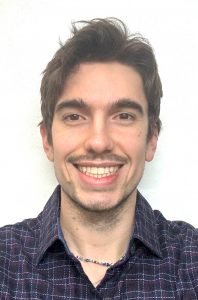
Maxime Godart
Graduate Student
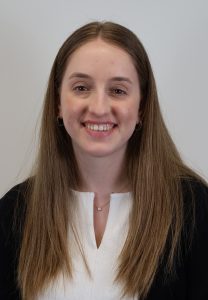
Shely Khaikin
Clinical Research Coordinator
Collaborators:
Dr. Laurel Morris, Dr. Priti Balchandani, Dr. James Murrough, Dr. Vincenzo Fiore, Dr. Karen Bachi, Dr. Rachel Fremont
Please contact us if you are interested in collaborating or joining the Lab

